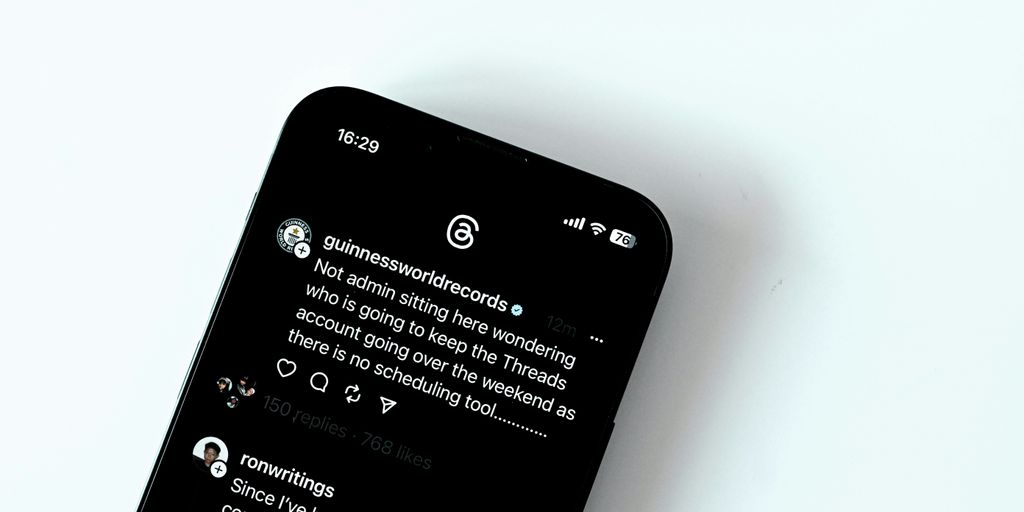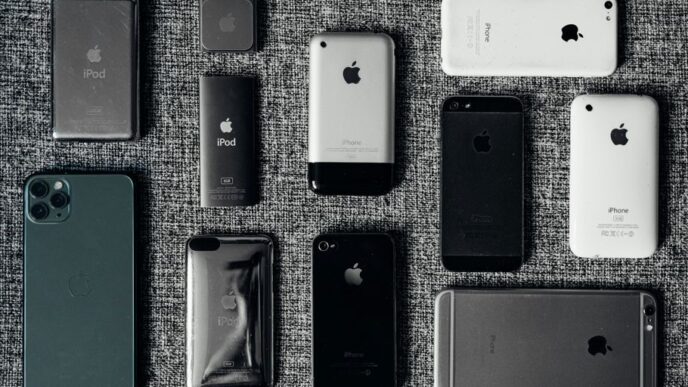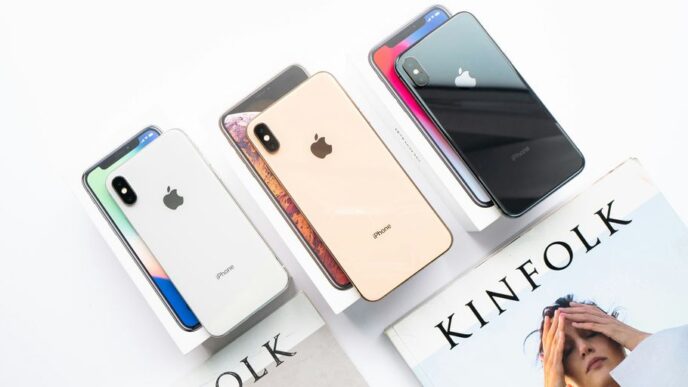So, you’ve got an app, maybe it’s doing well on Android, or maybe you’re just starting out and want to cover all your bases. Either way, getting your app onto both major platforms is a smart move. This guide is all about making that happen, focusing on the iOS side of things, from building it right to keeping it updated and making sure people actually like using it. We’ll also touch on moving your Android app over to iOS, which can sound like a big job, but it’s totally doable with the right approach. Think of this as your roadmap to app success across the board, especially when it comes to app updates and keeping your users happy.
Key Takeaways
- Make sure your iOS app follows Apple’s rules before you submit it. This means good descriptions and meeting legal stuff.
- After your app is out there, keep an eye on how it’s doing and what users are saying. Fix any problems that pop up.
- Regularly update your app with new features and fixes to keep users interested and your app competitive.
- When moving an app from Android to iOS, check if it’s worth doing and look at your old Android app’s design.
- Focus on making your iOS app work well on different iPhones and iPads, and use features that are specific to Apple’s system.
Understanding the iOS Development Landscape
Getting started with iOS app development can feel like a big undertaking, but breaking it down makes it much more manageable. Think of it like learning a new skill – you start with the basics and build from there. Apple’s platform hosts a wide variety of apps, from simple tools to complex games, each designed for a specific audience. To build these, developers rely on specific tools and languages. Swift is the go-to programming language for iOS, known for being efficient and relatively easy for newcomers to pick up. SwiftUI is also a powerful tool that helps create interfaces, even if you’re new to coding.
Here’s a general idea of the process:
- Ideation: Figuring out what your app will do and who it’s for.
- Design: Focusing on how the app looks and how users interact with it.
- Development: Writing the actual code using languages like Swift.
- Testing: Making sure everything works correctly and fixing any problems.
- Submission: Getting your app ready for the App Store.
Understanding these initial steps is key to creating apps that do well. It’s the foundation for everything else you’ll do.
Designing a User-Friendly Interface
Once you have a handle on the basics, the next big piece is design. A good user interface (UI) is what keeps people coming back to your app. It’s not just about making things look pretty; it’s about making the app easy and enjoyable to use.
- Know Your Audience: Spend time understanding who will be using your app. What do they need? What do they expect? Tailoring your design to them is important.
- Follow Apple’s Lead: Apple provides detailed guidelines, called the Human Interface Guidelines (HIG). These cover everything from how buttons should look to how text should be displayed. Sticking to these guidelines helps your app feel familiar to iOS users.
- Keep It Simple: Users shouldn’t have to guess how to use your app. Simple layouts, clear instructions, and obvious buttons make a big difference. Avoid clutter and focus on making the main functions easy to find and use.
Choosing the Right Tools for Designing Interfaces
Selecting the right tools can really speed up your design process and improve the final product. While you’ll eventually use coding languages, there are tools that help you visualize and plan your app’s look and feel before you even write a line of code.
- Sketch: A popular vector design tool for macOS, often used for UI design. It’s known for its clean interface and focus on digital design.
- Figma: A web-based design tool that allows for collaboration. Multiple people can work on a design at the same time, making it great for teams.
- Adobe XD: Part of the Adobe Creative Cloud, this tool offers features for UI/UX design and prototyping, allowing you to create interactive mockups.
Core iOS App Development Practices
Alright, so you’ve got the basics down and a killer idea for an app. Now comes the part where you actually build it. This means getting features and all that cool stuff into your app, and figuring out where to keep the data it needs. Plus, you’ll want it to talk to the internet, right? That’s where things get interesting.
Integrating Features and Functionality into Mobile Apps
This is where your app starts to feel like a real thing. You’re adding buttons that do stuff, screens that change, and maybe even some animations. It’s like putting the engine and wheels on a car. You need to think about how each piece connects and works with the others. For example, if you’re building a to-do list app, you’ll need a way to add new tasks, mark them as done, and maybe set reminders. Each of these is a feature you need to code.
Data Storage Options for iOS Apps
Your app needs to remember things, whether it’s user preferences, saved game progress, or that list of tasks we just talked about. iOS gives you a few ways to do this. For simple things, like remembering if a user turned on dark mode, UserDefaults is pretty straightforward. It’s like a small notebook for your app. If you have more complex data, like a list of contacts or a bunch of photos, Core Data is a more robust option. It’s like a filing cabinet that helps you organize and find your information easily. Choosing the right one depends on how much data you have and how you need to use it.
Networking Capabilities with REST APIs
Most apps these days need to connect to the internet to get or send information. Think about social media apps showing you a feed, or weather apps pulling the latest forecast. They do this using something called REST APIs. Basically, it’s a way for your app to ask a server for information and get it back in a structured format. You can use Apple’s built-in URLSession for this, or if you want something a bit easier to handle, libraries like Alamofire can make sending requests and getting responses much simpler. It’s how your app talks to the outside world.
Ensuring Quality Through Testing and Debugging

So, you’ve put in the work, built out all the features, and made sure your app looks good. That’s awesome! But before you even think about hitting that "submit" button for the App Store, we really need to talk about making sure everything actually works the way it’s supposed to. It’s not just about having a pretty interface; it’s about reliability.
The Importance of Thorough Testing
Think of testing as the final quality check. It’s where you catch all those little glitches and bigger problems before your users do. If your app crashes when someone tries to save a photo, or if a button just doesn’t do anything, people aren’t going to stick around. Good testing means your app is stable and does what it promises. It’s about building trust with your users. You want them to feel confident using your app, knowing it won’t let them down.
Tips for Effective Unit Testing
Unit testing is a big part of this. It’s like checking each individual component of your app to make sure it works on its own. Here are a few pointers:
- Cover Your Bases: Write tests for all the different parts of your code, including those tricky
Preparing for App Store Submission
Getting your app ready for the App Store is a big step. It’s not just about having a working app; it’s about making sure it fits what Apple expects. Think of it like preparing for a job interview – you want to look your best and have all your ducks in a row.
Ensuring Application Store Consistency
First off, you need to make sure your app plays by Apple’s rules. These are laid out in the App Store Review Guidelines. It covers everything from how you describe your app to how it handles user data. You’ll need to provide accurate information, like the app’s name, description, keywords, and privacy policy. Your app’s listing needs to be clear and compelling, giving users a good reason to download it. Make sure all the metadata is correct and that you’re not hiding anything from users, especially regarding data collection. If Apple flags anything, you’ll have to fix it before they’ll even consider your app.
Submitting Your App to the App Store
Once you’ve checked all the boxes and feel confident your app meets the guidelines, it’s time to submit it. You’ll do this through App Store Connect, which is Apple’s portal for developers. You’ll upload your app build and fill out all the required information. After submission, your app goes into a review queue. Be patient, as this can take a few days, sometimes longer. If the review team has questions or needs more information, they’ll reach out. Respond promptly to keep the process moving.
Navigating the App Review Process
The review process is where Apple checks if your app meets their standards. They look at functionality, design, content, and business practices. They want to make sure your app is stable, secure, and provides a good user experience. They also check for compliance with legal requirements and their own policies. If your app is rejected, don’t get discouraged. Read the feedback carefully, make the necessary changes, and resubmit. Many successful apps have been rejected on their first try. It’s all part of the learning curve.
Post-Launch Monitoring and Maintenance
So, your app is out there in the wild! That’s a huge accomplishment, but honestly, the work isn’t really done. It’s more like the next phase begins. You’ve got to keep an eye on how people are actually using your app and what they’re saying about it. This is where post-launch monitoring and maintenance come into play.
Think of it like owning a car. You don’t just buy it and forget about it, right? You need to check the oil, make sure the tires are good, and fix things when they start making weird noises. Your app is pretty much the same. You need to be proactive about keeping it running smoothly and making users happy.
Monitoring App Performance and User Feedback
First things first, you need to know how your app is performing. Are there crashes happening? Is it slow on certain devices? Tools can help you track this stuff. You’ll want to look at things like:
- Crash Reports: These are super important for finding out when and why your app is failing.
- Usage Analytics: See which features people use the most, how long they spend in the app, and where they might be dropping off.
- User Reviews and Ratings: Keep a close watch on the App Store and Google Play. These are direct lines to what your users think, good or bad.
Don’t just collect this data; actually look at it. Understanding user behavior is key to making smart decisions about future updates. It helps you figure out what’s working and what’s not, so you can focus your efforts where they’ll make the biggest difference. You can find some great strategies for this in this guide on maintaining your mobile application.
Implementing Regular App Updates
Based on what you learn from monitoring, you’ll want to plan regular updates. These aren’t just for adding shiny new features, though that’s part of it. Updates are also for:
- Bug Fixes: Squashing those annoying little problems that pop up after launch.
- Performance Improvements: Making the app faster and more efficient.
- Security Patches: Protecting your users’ data and your app from threats.
- Feature Enhancements: Building on existing features or adding new ones based on user requests or market trends.
It’s a good idea to have a schedule, maybe a small update every month or a bigger one every few months. This keeps users engaged and shows them you’re actively working on the app.
Maintaining User Engagement Over Time
Getting users to download your app is one thing, but keeping them coming back is another. Updates help, but you can also do things like:
- Push Notifications: Use them wisely to alert users about new content or important updates, but don’t overdo it.
- In-App Messaging: Communicate directly with users within the app for announcements or support.
- Community Building: If it makes sense for your app, create a way for users to connect with each other.
It’s all about making the user experience positive and showing your users that you care about their continued satisfaction. Keeping your app relevant and useful is an ongoing process, not a one-time event.
Transitioning Your Android App to iOS
So, you’ve got a solid app running on Android, and now you’re thinking about bringing it over to the iOS side of things. That’s a smart move, honestly. Reaching users on both major platforms is pretty much a must these days if you want your app to really go places. It’s not just about doubling your potential audience; it’s about tapping into a different user base with its own expectations and preferences. This transition, though, isn’t just a simple copy-paste job. You’ve got to approach it with a plan.
Assessing Feasibility and Market Interest
First things first, you need to figure out if this move even makes sense. Is there a real demand for your app on iOS? Doing some market research is key here. Look at what your competitors are doing, check out app store trends, and maybe even ask your current Android users if they’d use an iOS version. Understanding the potential user base and their willingness to adopt your app is the bedrock of this entire process. It helps you decide if the effort and cost are worth the potential return.
Reviewing Existing Android Application Design
Before you start coding, take a good, hard look at your current Android app. What’s working well? What are the core features that users love? You’ll want to map out the architecture and the codebase. This isn’t about just porting code directly – that’s rarely a good idea. It’s about understanding the logic and functionality so you can rebuild it in a way that feels natural and performs well on iOS. Think about the user experience on Android and how that translates to iOS conventions. You can find some helpful tips for this transition at this guide.
Defining Clear Objectives and Targets
What exactly do you want to achieve by bringing your app to iOS? Is it about increasing revenue, reaching a new demographic, or simply having a presence on both platforms? Setting clear goals will guide your decisions throughout the development process. For example, if your main goal is to capture a specific market segment, you’ll want to tailor the iOS experience to meet their needs. Having these targets in mind helps you prioritize features and allocate resources effectively.
Key Steps in Android to iOS Application Transformation
So, you’ve got a solid app running on Android, and now you’re thinking about bringing it over to the iOS side of things. That’s a smart move to reach more people. It’s not just a simple copy-paste job, though. You’ve got to think about how things work differently on iPhones and iPads. Let’s break down the main steps to make this transition smooth.
Review Android Application Features
First things first, you need to really look at what your Android app actually does. What are the core functions that users rely on? You’ll want to figure out which of these are absolutely necessary for the iOS version. Think about which features get the most use and which ones are really important for people using Apple devices. It’s like going through your old toolbox and deciding which tools you absolutely need for a new project.
Plan iOS User Interface
Now, about the look and feel. iOS has its own set of design rules, called the Human Interface Guidelines. You can’t just slap your Android design onto an iPhone and expect it to feel right. You need to use standard iOS elements like navigation bars, buttons, and menus that people are used to. Pay attention to how things are spaced out, the fonts you use, and the overall visual flow. The goal is to make it feel natural and easy to use for anyone on an iPhone or iPad.
Revise Codebase for iOS Compatibility
This is where the actual coding happens. Your Android app is likely written in Java or Kotlin. For iOS, you’ll be working with Swift or Objective-C. This means you’ll need to translate your existing code, or sometimes rewrite parts of it, to fit how iOS development works. You’ll also need to use iOS-specific tools and libraries to make sure everything runs correctly on Apple’s devices. It’s a bit like learning a new language to talk to a different group of people.
Optimizing and Implementing iOS-Specific Features

So, you’ve got your Android app ready to make the jump to iOS. That’s great! But just porting the code isn’t enough. You really need to make it feel at home on an iPhone or iPad. This means digging into what makes iOS tick and using those features to your advantage.
Implement Platform-Specific Features
Think about what makes an iPhone an iPhone. Apple has its own set of tools and services that users expect. For instance, integrating with Apple Pay for smooth transactions is a big one. Then there’s iCloud for syncing data across devices, which many users rely on. You might also want to look at things like push notifications that feel native to iOS, or perhaps using the HealthKit framework if your app deals with health data. Making these platform-specific integrations is key to a good user experience. It shows you’ve put thought into how your app fits into the Apple ecosystem. It’s also a good idea to check out the App Store keyword strategy to make sure people can find your app.
Streamline Performance for iOS Devices
Performance is huge on iOS. Users expect apps to be fast and smooth. When you’re moving from Android, you might have code that works fine on one platform but bogs down on another. You’ll want to go through your app and optimize things. This could mean looking at how memory is used, making sure background tasks aren’t draining the battery, and generally just making sure everything loads quickly. Testing on different iPhone models and iOS versions is super important here. You don’t want your app to feel sluggish on older devices or crash on the latest ones.
Testing and Debugging Your iOS App
Before you even think about submitting your app, you’ve got to test it. And I mean really test it. This isn’t just about checking if buttons work. You need to test all the iOS-specific features you’ve added. Does Apple Pay work correctly? Does iCloud sync properly? Are those push notifications showing up when they should? You’ll also want to use Xcode’s debugging tools to find and fix any issues. Breakpoints are your friend here. You can step through your code line by line to see exactly what’s happening. It’s a bit like being a detective for your own app. Make sure to test on a variety of devices and screen sizes to catch any oddities. It’s better to find bugs now than have users complaining later.
Wrapping It Up
So, we’ve gone through a lot, from getting your Android app ready for the iOS world to making sure it works perfectly on iPhones and iPads. It’s not always a simple path, and sometimes things pop up that you didn’t expect, like a feature not quite working right or a design that just feels off on a different screen size. But by taking it step-by-step, planning carefully, and always testing, you can get your app out there successfully. Remember to keep an eye on how users are liking your app after it’s live and make those updates to keep things fresh. It’s a lot of work, but seeing your app available to more people is pretty great.
Frequently Asked Questions
How can I become a pro at making iOS apps?
To get good at making apps for iPhones and iPads, you need to learn the Swift coding language and how to use Xcode, which is the main tool for making apps. It’s also important to understand Apple’s rules for how apps should look and work, and then practice building different kinds of apps.
Are iOS app developers needed a lot?
Yes, people who know how to make iOS apps are in high demand. Because so many people use iPhones and iPads, companies always need developers to create and update apps for them.
How long does it take to get really good at making iOS apps?
It usually takes about 6 to 12 months of consistent learning and practicing to become skilled at making iOS apps. This includes learning the basics, building projects, and staying updated with new tools.
What should I do to make sure my app is ready for the App Store?
When you’re getting your app ready for the App Store, make sure it follows all of Apple’s rules. This means giving correct information about your app, having a good description, and following laws about privacy. Fix any problems Apple points out before you send it in.
What should I do after my app is released?
After your app is available, keep an eye on how it’s doing and what users are saying. Fix any problems that come up quickly to keep users happy. Update your app often with new features or fixes to keep it popular and competitive.
What are the main steps to change an Android app to an iOS app?
When moving an app from Android to iOS, first check if it makes sense and if people will want it on iPhones. Then, look at your Android app’s design and features. You’ll need to rewrite the code using Swift or Objective-C, make sure the design follows Apple’s style, and add any special features that work best on iPhones.














